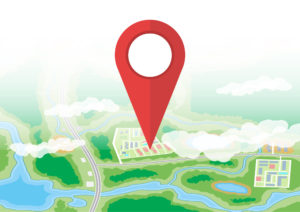 You know that Google shows you local results when you search for physical things, such as restaurants or law firms, but have you ever wondered how or why it knows to do this as opposed to showing you a dry-cleaner in, say, London? SEO teaches us that websites with the highest rankings should show up first, yet Google filters results, at least in part, by where we are and what we’re looking for. In this post, we’ll discuss how that works and why it’s so important for your organic SEO rankings.
You know that Google shows you local results when you search for physical things, such as restaurants or law firms, but have you ever wondered how or why it knows to do this as opposed to showing you a dry-cleaner in, say, London? SEO teaches us that websites with the highest rankings should show up first, yet Google filters results, at least in part, by where we are and what we’re looking for. In this post, we’ll discuss how that works and why it’s so important for your organic SEO rankings.
What is a Centroid?
As you can likely infer, search engines designate city hubs or centers, a.k.a. centroids, to serve as a point of reference for all relevant search queries. In the earlier days of SEO, the centroid was a fixed geographical point, usually city hall or another “downtown” location. Essentially, the busiest and most recognized point in the city.
The Problem with the Original Centroid Concept
As time wore on, search engines realized that just because a business was located in the smack of downtown on Main Street, it might not necessarily warrant a high search ranking. Furthermore, better businesses with better websites that might serve a user better might be located in the suburbs or the next town over. It wasn’t a great user experience and search engine companies realized this whole centroid business was a bit more nuanced.
The next best solution, rolled out around 2008, was to designate centroids in industry clusters. Because similar businesses tend to be located near each other, (think: car dealerships, strip malls and medical pavilions) industry-specific centroids were established. This made slightly more sense, but it definitely didn’t solve the “great business out in the boonies versus terrible business in the best location” paradigm.
The Solution? YOU are the Centroid!
Around 2015, the lightbulb finally turned on. Since search engines were already collecting location data from the user, why not alter the algorithm that made the user’s device the centroid? Alas, a collective “duh” was heard ’round the world. You’ve probably noticed that when you search for a business now, the first results you see are all relatively close to your physical location at any given moment, whether you’re using your desktop or out roaming the streets with your cell phone.
Everyone Wins with the User Centroid
The obvious advantage here is for the user. They’re not being directed to a business 60 miles away just because that firm has a fantastic website. As the business owner this works in your favor, too. You can be fairly certain the people looking at your website can get to your office with relative ease, increasing the likelihood of converting them into an actual paying client. Your PPC clicks are also more valuable. All in all, it’s a winning solution that continues to improve.



